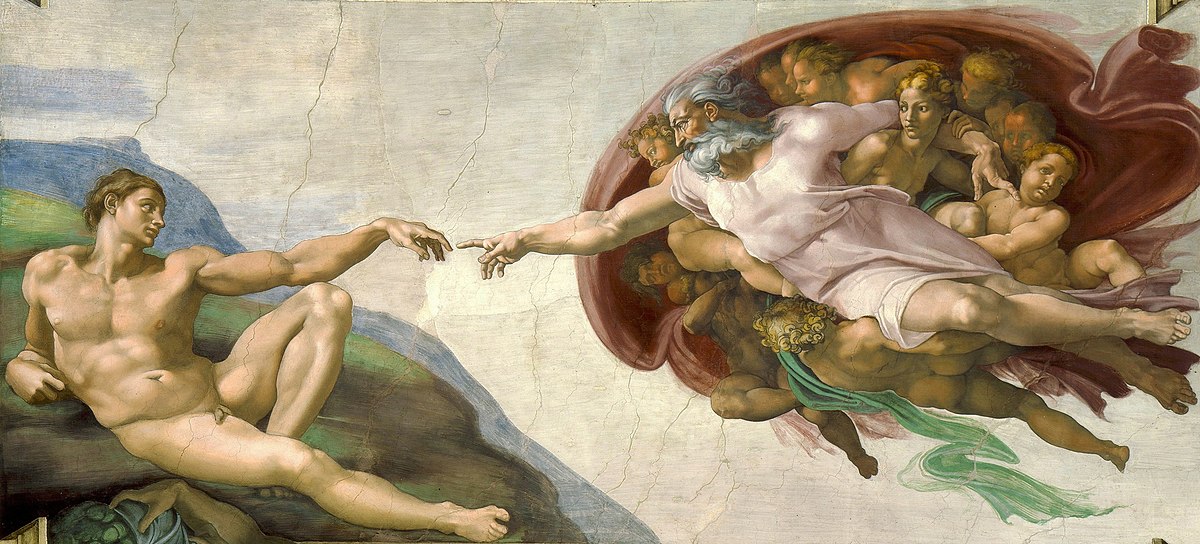1.1 Michelangelo's Creation of Adam

Background:
Artist: Michelangelo
Location: Ceiling of the Sistine Chapel, Rome
Date: Painted in the 16th century
Theme: Showcases the creation of humanity, specifically the moment God brings Adam to life
Significance: A famous work of Christian art, illustrating Catholic beliefs about God’s nature and role as the creator
Reflection of Catholic Beliefs:
1. Adam Waiting for God’s Touch
Adam is not yet alive but is waiting for God to touch him, showing that humanity depends on God for life
Reflection: This showcases the reliance humans have on God to bring them to life, highlighting the belief that all life comes from God. God is omnipotent
2. Similarities in God’s and Adam’s Appearance
Both figures are powerful and muscular, lying in similar positions.
Reflection: Reflects the idea from Genesis 1:27 that humanity is made in the image of God. Humans are made ‘imago dei’. It reinforces the belief that humans share some aspects of God's nature
3. God’s Older Appearance vs. Adam’s Youth
God is depicted as much older, signifying His eternal nature (He transcends time, so does not age), while Adam is young and full of potential
Reflection: This contrast showcases that God is ancient and eternal, whereas humanity is young and temporary, and is dependent on God's life giving power
4. Adam as the Perfect Man
Adam is portrayed as the perfect man, full of strength and potential
Reflection: This reflects Genesis 1:31 where God declares creation to be "God saw all that he made, and it was very good," implying that humans were created in a state of perfection.
5. God’s Transcendence (Angels Carrying God)
God is depicted as being carried by a group of angels, emphasising His transcendence (He exists beyond the earthly and physical world)
Reflection: This shows that while God is involved in creation, He is beyond it which reinforces the Christian belief in God's omnipotence and His existence outside of the universe
6. Uniqueness of Humanity
God is shown creating a human/man (Adam) rather than any other species
Reflection: This reflects the belief that humans are uniquely special to God, made in His image (Imago Dei) and have a special relationship with Him
7. God and Adam Reaching Out
Both figures are stretching their hands towards each other
Reflection: This reflects the Catholic belief in the close and personal relationship between God and humanity. There is a longing for unity and connection
Limitations of the paintings in Catholic beliefs:
Creation Method
Genesis 2:7 describes God bringing Adam to life by breathing into his nostrils, not by touching him. “breathed into his nostrils the breath of life, and the man became a living being.”
Reflection: Michelangelo’s depiction alters this detail, potentially misrepresenting the method of creation.
Equal Size of God and Adam
In the painting, God and Adam appear nearly the same size, suggesting equality
Reflection: This contradicts Catholic teaching that God is supreme and humanity, although special, is still subordinate to God.
God has a physical form
God is shown to be in a physical form
Reflection: This contrasts to Catholic teachings that God is transcendent, as the painting depicts God to be in an incarnate, human form. This limits his power and nature to that of man.